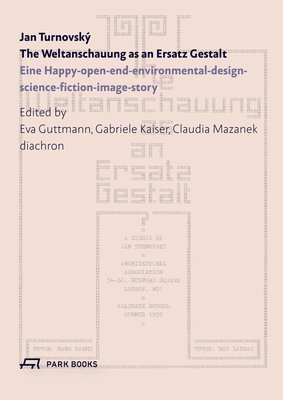Kommande

829:-
The edition offers a new approach to what Weizman names documentary architecture," meaning that to write about the history of a building is also to map the world in which it is located. After the First World War and under the British Mandate, Haifa grew from a small Ottoman port town into a regional metropolis and industrial center around a deep seaport. The city was part of an open space that extended from Cairo to Damascus through Beirut, in a region where Syria, Palestine, and Lebanon were part of the same fluid, interconnected space. During the Second World War, it became a border town. Under French Vichy, the border between Lebanon and Syria ran sixty kilometers to the north and hardened only after the creation of Israel in 1948 and the wars with Lebanon. Haifa's architectural modernism developed in relation to the city's geopolitical environment. No building better manifests Haifa's predicament than the modernist casino building, built in 1934, ostensibly for British officers in Haifa's Bat Galim seafront district. The Bat Galim Casino is a nexus in the political transformation of the region. It emerged as an extraterritorial space where, from the 1940s, British officials and Palestinian and Jewish politicians mingled with De Gaulle's Free French forces, as well as architects, artists, spies, traders, journalists, travelers, sportspeople, poetsmany leaning to leftist and communist ideologiesand refugees, fostering a dynamic exchange of ideas. The region is fragmented; this book seeks to weave together connections. The Bat Galim Casino marks the connection of stories whose threads run along intercontinental channels to the French-American performer Josephine Baker, while another story follows the hearing-impaired Viennese architect Adolf Loos and his specialist, Dr. Fleischner, who emigrated to Haifa, leading to the story of home-sick migrants who aimed to recreate a piece of Europe in Palestine. An encounter with architect and filmmaker Amos Gitai leads to a deeper investigation of the story of his father, Munio Weinraub, who, along with other Bauhaus-trained architects, was forced to leave Germany in 1934 after escaping imprisonment for working with the Communist Party. A conversation with conservationist Waleed Karkabi discusses the struggles of historians and conservationists to preserve the stories and buildings of Arab architects such as Antoine Tabet, who worked in Haifa until the establishment of the State of Israel in 1948. The book thus synchronizes different narratives that have been swept away by the chaotic hurricanes of the time.
- Format: Pocket/Paperback
- ISBN: 9783035806878
- Språk: Engelska
- Antal sidor: 224
- Utgivningsdatum: 2025-10-06
- Förlag: Diaphanes AG

